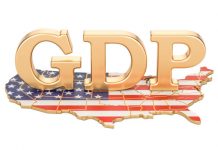Key insights from the week that was.
Domestically, the main event was the RBA’s November policy meeting, where the Board decided once again to leave the cash rate unchanged at 4.35%. Communications on the day – via the decision statement, press conference, and Statement on Monetary Policy – provided more colour around changes to the RBA’s forecasts. Most notable were a near-term downgrade to consumer spending and the edging down of underlying inflation in 2026, while the outlook for employment growth was revised up.
On balance, developments since the last policy meeting have not materially altered the RBA’s perspective, a mixed picture on the domestic economy reinforcing the Board’s patient approach of “not ruling anything in or out” for the time being. Echoing this point, the Board’s policy discussion in November considered the balance of risks around the central case of remaining on hold versus actively considering a rate hike or cut – similar to September.
In a video update midweek, Chief Economist Luci Ellis explained the key takeaways from the RBA’s decision in more detail. In our view, the RBA’s interpretation of the recent data flow is slightly more hawkish than our own, offering greater certainty the RBA Board will not change their stance this year. However, we remain of the view that the first rate cut will be delivered in February 2025 and easing will continue at a measured pace of 25bps per quarter from there until 3.35% in Q4 2025, a rate we consider to be broadly neutral for the economy.
Offshore, the medium-term settings and consequences of fiscal policy are becoming less certain, but the immediate path for monetary policy is clear.
Throughout the week, markets were squarely focussed on the US Presidential and Congressional elections. Donald Trump comfortably surpassed the 270 Electoral College votes needed to serve a second term as President. While some Congressional contests are still to be confirmed, the Republican party looks to be on track to hold a majority in both the Senate and House of Representatives. These results should give President-elect Trump considerable scope to enact mooted policy reform across tax, regulation, spending and trade. While specific policy detail won’t be known until after inauguration on 20 January, the net result for the deficit is expected to be expansionary, steepening the uptrend in Federal Government debt on issue over the coming decade. Market participants are likely to continue to front-run fiscal decision making, holding Treasury yields around their current level, almost 75bps above September’s low.
The immediate outlook for monetary policy is certainly not behind the lift in yields. This week the FOMC followed up September’s 50bp cut with a 25bp reduction, taking the mid-point of the fed funds range to 4.625%. Chair Powell was clear in the press conference that the Committee expect inflation to continue to abate to target, with non-housing services and goods inflation already consistent with headline inflation of 2.0%yr, and strength in housing inflation a consequence of past agreements not current market dynamics. While positive on the outlook for activity and employment, it is clear the FOMC are now more concerned with downside risks for the labour market than upside price risks. Any further deterioration in the labour market would be unwanted.
On this week’s election specifically, Chair Powell made clear that the outcome will have no effect on monetary policy in the near term. It is only over time, as policy is committed to and implemented, that the economic implications become clear and any monetary policy response can be decided upon. The December FOMC meeting will be the first opportunity for Committee members to update their forecasts; however, this will be more than a month before the new administration takes office, let alone when the President-elect and new Congress begin to debate policy. By late-2026 however, we believe the FOMC will see a need to tighten policy to counteract the cumulative inflationary consequences of more expansionary fiscal policy, which is likely to focus on supporting demand versus supply. With much of the expected fiscal policy effects already priced in, term interest rates are likely to hold near current levels over the coming year, then edge higher from late-2025, pre-empting monetary policy tightening.
Across the pond, the Bank of England also cut rates by 25bp to 4.75% this week. The Committee provided its assessment of the new government budget, nudging the GDP profile higher by ¾% at its peak in Q4 2025. A rise in employment costs from an increase in the National Living Wage and changes in the employers’ National Insurance contribution will also influence wages and profits margins, and ultimately inflation. The inflation outlook was nudged up from Q3 2025, with headline inflation not expected to be sustainably at target until Q2 2027, a year later than in the prior set of forecasts. The BoE’s central case is that further economic slack is needed to normalise inflation and wage dynamics, warranting a ‘gradual approach’ to removing restrictive policy. The exact pace of rate cuts from here will depend on the data flow, meeting by meeting. The closer Bank Rate gets to its neutral level, the greater the justification for prudence.














